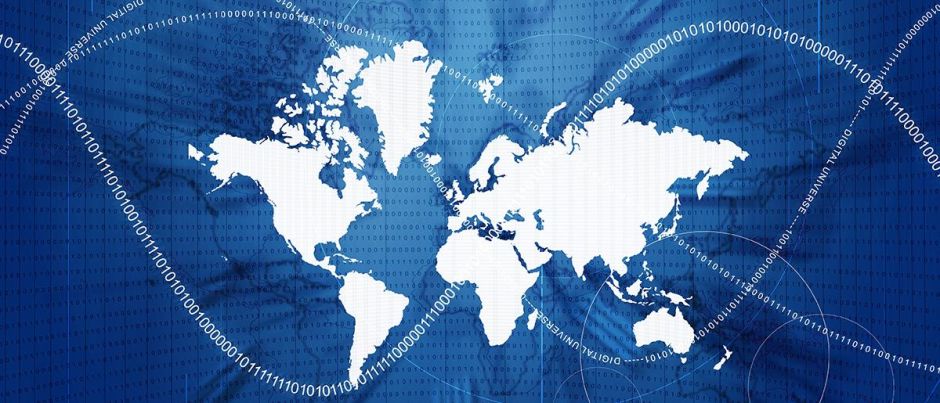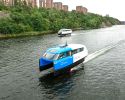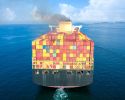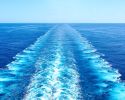The next step for a Swedish effort on smart vessels

In December, Lighthouse gathers the maritime sector - industry, academia and government - to map out the route for a Swedish initiative towards a safer shipping using smart vessels. A clear request from shipping companies Stena and Wallenius are concrete test beds.
- Our ambition is to be able to start up testbeds, both in simulators and on ships, and work in collaboration with academia and institutions, shipping companies and technology providers. We hope to see anything happen before the summer of 2017, Åsa Burman, Director of Lighthouse, says.
Things are happening fast in the maritime sector right now. The development of autonomous vehicles has long been focusing on land and air-based transport, but lately, the question about smart vessels and autonomous shipping has started to grow. Particularly for the Nordic countries, it is important to have a competitive and safe shipping sector.
- More or less all the Nordic countries and Island specifically, are considered as logistical islands. We are so much depended on shipping, we are not really in the centre of the world, we have longer transports, quite demanding weather conditions during the winter time and in that perspective, it's important for us to secure smart, efficient and economical ways of transport. And also to help our industries to cope in the international competition, says Martti Simojoki, Marine Super Intendent at Wallenius, one of the world's largest car carriers.
Reduced environmental impact
Lighthouse work focuses on autonomous technology that will lead to safer shipping. Smart ships could detect possible dangers earlier and avoid collisions and groundings. Smart vessels would also be able to optimize routes and fuel consumption, resulting in reduced environmental impact.
- The car industry has all this equipment that supports the driver and the operations of the car. Those systems should be applied on board a ship as well. We have a lot of support system already today, auto-tracking, autopilots, radars and so on. If we could make them work together, it could be a good decision support tool for the crew on board, Harry Robertsson, Technical Director at Stena, says.
- A simple example is a traditional stand on / give way situation. In those situations, when it's not clear cut what vessel is to stand on and who is to give way, smart vessels with the help of algorithms or set parameters could make the decision to steer or not to steer or alter speed, Martti Simojoki says.
Calling for test beds
Already in 2025, Finland wants the Baltic Sea to be an area for autonomous shipping and Norway have taken the decision to open up the Trondheim Fjord as a testing area for smart vessels. For Sweden, there is a good chance to be a part of the ongoing development.
- I think Sweden is in a very good position if you think what we have around us, we have quite many high-tech suppliers and manufactures, with certain military technology, good sensor technology and we have a mind-set of not being afraid of using the latest and the newest technology. Given all these factors, I think we are in a very good position in Sweden, Martti Simojoki says.
Shipping is facing a paradigm shift and for Sweden it is important to stay in front as a pioneer of modern shipping. Getting there is the main question for the Lighthouse seminar on autonomous vessels 5 December 2016.
- I think we have to introduce test beds, test beds that gathers a lot of data and then we have to use this data in simulators to see if it works, and then we can introduce the technology on board the ships and test it step by step, Harry Robertsson, Stena, says.
- First of all, we in the Nordic countries should put our best ideas together, and try to get the best benefits out of it. The other thing is to have some concrete testbeds, we are already thinking of a back bridge system where we have an autonomous part of a vessel which is not actually connected to the steering of a vessel, but set in order to evaluate the technology, to see if it is mature enough to do the tasks that are required, Martti Simojoki, Wallenius, says.
Text: Andreas Kron
-
 NextWave – en podd som ska locka unga
NextWave – en podd som ska locka unga -
 Ny studie: Eldrivna pendelbåtar kan effektivisera Stockholms kollektivtrafik
Ny studie: Eldrivna pendelbåtar kan effektivisera Stockholms kollektivtrafik -
 Sjöfartens utsläpp ökar
Sjöfartens utsläpp ökar -
 Sociala relationer påverkar val av bränsle
Sociala relationer påverkar val av bränsle -
 Sjöfartens omställning kräver ”mjukare” påtryckningar
Sjöfartens omställning kräver ”mjukare” påtryckningar -
 Hon hade avtalad tid med Kapten ynkrygg
Hon hade avtalad tid med Kapten ynkrygg -
 Lighthouse omvärldsanalys 2025 – osäkerhet och tullar präglar sjöfarten
Lighthouse omvärldsanalys 2025 – osäkerhet och tullar präglar sjöfarten -
 Se seminariet Shipping in the Marine Environment
Se seminariet Shipping in the Marine Environment -
 Vad betyder egentligen de 90 procenten?
Vad betyder egentligen de 90 procenten? -
 Hålla där...
Hålla där...

